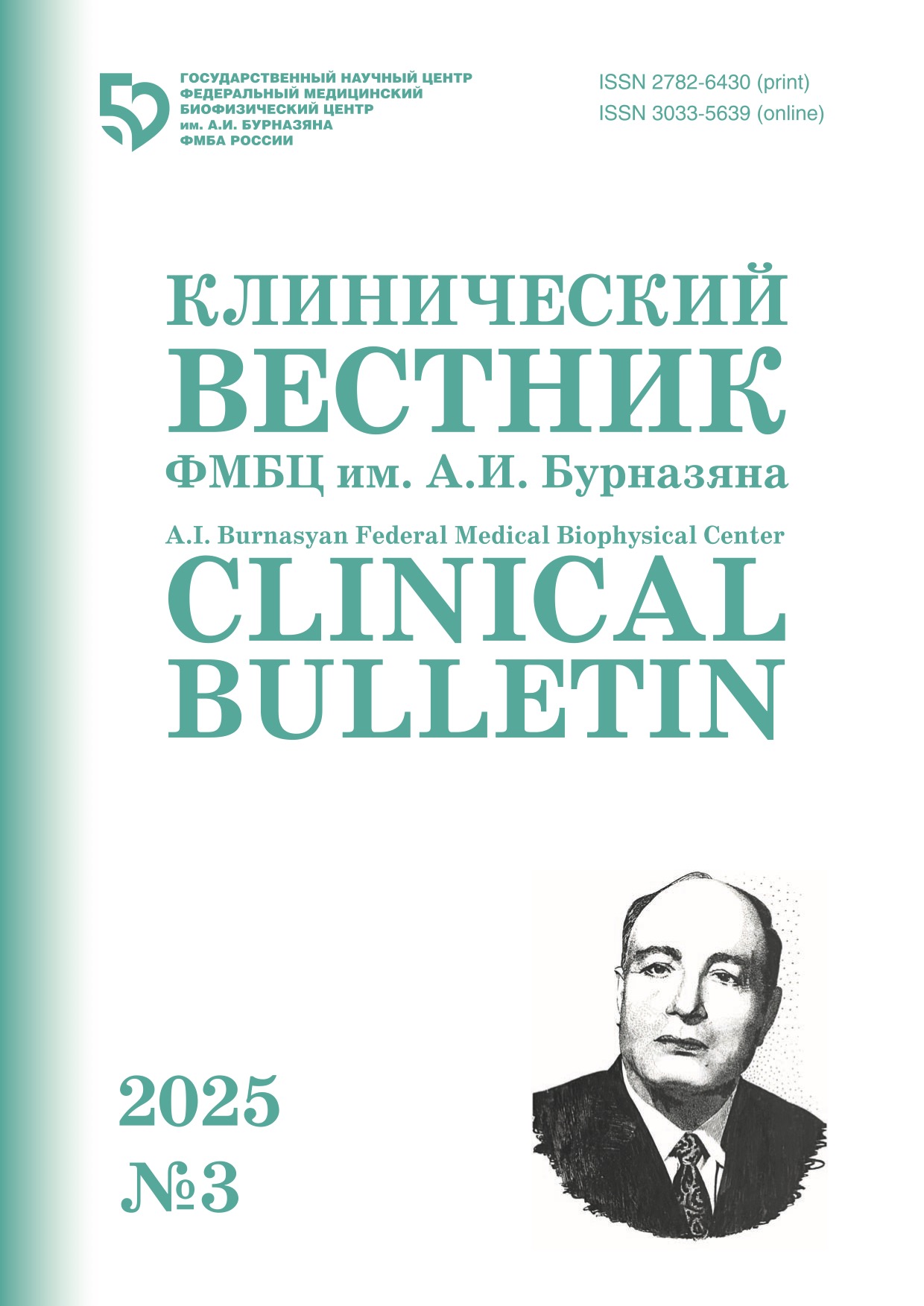A.I. Burnasyan FMBC clinical bulletin. 2024 № 3
S.Yu. Mikheev1, V.I. Pustovoit1, V.M. Mikheeva2, K.A. Yurku1, M.V. Ivanov1
Amputation Level and Prolactin: Features of the Hormonal Profile of Paralympic Athletes
1International Office, State Research Center – Burnasyan Federal Medical Biophysical Center of Federal Medical Biological Agency, Moscow, Russiа
2FSBEI HE SPbSPMU of the Ministry of Health of Russia, Saint Petersburg, Russia
Contact person: Yurku Kseniya Alekseevna: ks_yurku@mail.ru
Abstract
Purpose: to evaluate the effect of the level of the lower extremities’ traumatic amputation on the prolactin in Paralympic athletes.
Materials and methods: medical examination data of 150 athletes with traumatic amputations of the lower extremities (members of national teams of the Russian Federation) was analyzed, athletes’ average age was 34,25 ± 9,17 years, were analyzed, among them women – 29 (19.3%), men – 121 (80.7%).
Results: it was revealed that in Paralympic athletes with unilateral amputations, the level of prolactin was statistically significantly higher with loss of a limb at the hip level (163.00 and 227.40 µIU/ml, respectively, p = 0.004), when comparing hormone concentrations in athletes with bilateral amputations no statistically significant differences were found in the level of both legs and both thighs (p = 0.364).
Conclusion: athletes with hip amputations have statistically significantly higher prolactin levels than athletes with calf amputations.
Keywords: paralympic sports, hormonal profile, amputation, prolactin
For citation: Mikheev SYu, Pustovoit VI, Mikheeva VM, Yurku KA, Ivanov MV. Amputation Level and Prolactin: Features of the Hormonal Profile of Paralympic Athletes. A.I. Burnasyan Federal Medical Biophysical Center Clinical Bulletin. 2024.3:34-37 (In Russian) DOI: 10.33266/2782-6430-2024-3-34-37
REFERENCES
- Belenov V.N., Dmitrenko A.I. Modern Trends in the Development of Theory and Methods of Training and Various Approaches to the Training Process of Para-Athletes in Speed-Strength Types of Athletics. Aktual’nyye Problemy Teorii i Praktiki Sportivnoy Trenirovki i Ozdorovitel’noy Fizicheskoy Kul’tury = Сurrent Problems in the Theory and Practice of Sports Training and Health-Improving Physical Culture. 2020;50;11:122-125 (In Russ.).
- Bryukhova K.Ye. Modern Paralympic Sport: Prospects For its Development. Aktual’nyye Problemy Pedagogiki i Psikhologii = Current Problems of Pedagogy and Psychology. 2022;3;12:11-23 (In Russ.).
- Grinin V.M., Shestemirova E.I. On the Quality of Life of Amputees in the Russian Federation. Problemy Sotsial’noy Gigiyeny, Zdravookhraneniya i Istorii Meditsiny = Problems of Social Hygiene, Health Care and History of Medicine. 2019;28;3:380-384 (In Russ.).
- Korobenkov N.O., Kochetov S.S., Grigorov P.A. Bionic Limb Prosthetics. Sibirskiy Meditsinskiy Zhurnal = Siberian Medical Journal. 2019;3:22-27 (In Russ.).
- Semenova S.A., Khrekin D.O. Functional Training for Persons with Lower Limb Amputation. Vestnik Sportivnoy Nauki = Bulletin of Sports Science. 2021;2:35-39 (In Russ.).
- Blokhin S.A., Geyko G.D., Khayrullin A.G., et al. Current State and Trends in the Development of Adaptive Sports in Russia and Abroad. Uchenyye Zapiski Universiteta im. P.F.Lesgafta = Scientific Notes of P.F.Lesgaft University. 2019;167;1:34-39 (In Russ.).
- Trunina A.A. Development of Paralympic Sports in Russia. Nauka XXI Veka: Aktual’nyye Napravleniya Razvitiya = Science of the XXI Century: Current Directions of Development. 2020;1-2:244-248 (In Russ.).
- Federal State Statistics Service. URL: https://rosstat.gov.ru/ (date of access: 04/20/2024) (In Russ.).
- Shestilovskaya N.A. Productive and Unproductive Coping Strategies of Paralympic Athletes with Various Types of Violations. Zhurnal Belorusskogo Gosudarstvennogo Universiteta. Filosofiya. Psikhologiya = Journal of the Belarusian State University. Philosophy. Psychology. 2020;1:95-101 (In Russ.).
- Amram A.V., Cutie S., Huang G.N. Hormonal Control of Cardiac Regenerative Potential. Endocrine Connections. 2021;10;1:R25-R35.
- Kolesnikova G.S., Malysheva N.M., Zuraeva Z.T., et al. Determination of Prolactin Reference Intervals in Different Age Groups. Problems of Endocrinology. 2023;69;3:16-23.
- Easterling M.R., Engbrecht K.M., Crespi E.J. Endocrine Regulation of Epimorphic Regeneration. Endocrinology. 2019;160;12:2969-2980.
- Van den Hoek D., Beaumont P., Latella C. Athlete Impairments in Paralympic Sports. American Journal of Physical Medicine & Rehabilitation. 2024;103;8:e111-e112.
- Kons R.L., Patatas J.M. Paralympic Sports Classification: Need for Research Based on the Athlete’s Origin of Impairment. American Journal of Physical Medicine & Rehabilitation. 2023;102;10:929-930.
- Madzar T., Masina T., Zaja R., et al. Overtraining Syndrome as a Risk Factor for Bone Stress Injuries Among Paralympic Athletes. Medicina (Kaunas, Lithuania). 2023;60;1:52.
- Parziale J.R., De Luigi A.J. Golf in the Paralympic Games. American Journal of Physical Medicine & Rehabilitation. 2023;102;11:1040-1041.
- Sawczuk D., Gać P., Poręba R., Poręba M. The Prevalence of Cardiovascular Diseases in Paralympic Athletes. Healthcare (Basel, Switzerland). 2023;11;7:1027.
Conflict of interest. The authors declare no conflict of interest.
Financing. The study had no sponsorship.
Contribution. Article was prepared with equal participation of the authors.
Article received: 13.06.2024. Accepted for publication: 11.07.2024


